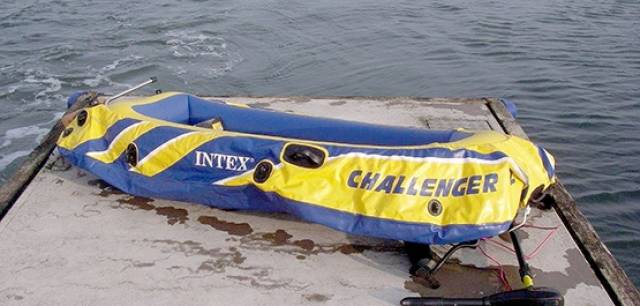Portaferry RNLI have issued a strong warning about the dangers of taking to the sea in unsuitable craft after a callout on Friday evening saw two men rescued from the freezing water after the inflatable dinghy they were in became swamped and they ended up in the water. The inflatable craft was fitted with an outboard engine and showed signs of patching on the tube where a repair had been carried out.
Volunteer lifeboat crew with Portaferry RNLI launched at 7.07pm on Friday evening (6 May) to Killyleagh some three and a half miles from the lifeboat station to two men in the water after their cries for help were heard from the shore. On arrival at the scene the lifeboat crew learned that the men, believed to be father and son, had been rescued from the freezing water by a local boat crew.
Commenting on the callout Portaferry RNLI Lifeboat Operations Manager Brian Bailie said, ‘These two men had a lucky escape. If their cries for help had not been heard this could have been an awful tragedy. These types of craft are totally unsuitable for the open waters off our coast. Conditions and tides can change at a moment’s notice and the sea must be respected. An inflatable dinghy which may be okay in a supervised indoor pool is not meant for the sea. Also in this case the addition of the power from the attached outboard engine made an unsuitable craft even more dangerous.’
‘We would urge people to be responsible and check that they are using the proper equipment when they take to the water. Conditions on the lough were quite calm on Friday with a force three and a slight sea, yet these people ended up in serious trouble. Thankfully they were wearing personal flotation devices but they spent some time in freezing cold water before their cries were heard and they were rescued.’






























































